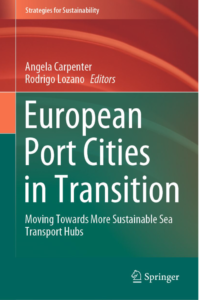
By R. Karimpour
In the era of globalisation, our world is in transition and there are challenges every day, such as climate change, and natural resource depletion. These environmental challenges threaten our lives and necessitate taking measures to transition toward resilient and reliable low-carbon developments. In this context, sustainability has recently gained substantial attention across sectors. In the face of increasing growth in the world economy, together with natural resource depletion, there is a need for new economic approaches. As a response to the improvement in resource performance, economies have started to explore ways not only to reuse products but also to restore more precious material and energy inputs.
The concept of a ‘Circular Economy’ (CE) can promise a move to sustainability in businesses and economies. Sustainable relations between port city stakeholders is one of the emerging sectors. However, globally, port cities are within an economic system that is structured on the linear ‘take-make-dispose’ model, not sustainable models.
During the last two decades, ports and their urban areas have been increasingly facing environmental challenges. Ports can have significant environmental impacts due to the types of activities that take place in them, resulting in negative externalities such as air and water pollution that mirror the destructive linear economy models at port-cities.
Continual globalisation based on trade liberalisation, with its increasing cargo transport, has resulted in a significant increase in pressures on port infrastructure and city resources, which should be addressed in a sustainable way. A limited number of studies on European port cities’ sustainability have focused on ports under the CE approach, specifically within the ports’ waste management and energy efficiency context. This chapter reviews of ports and development, city and development, and explores Port-City redevelopment within the CE agenda that has been undertaken in the context of European ports. The review identifies what some European port cities have been doing to become more sustainable, with the help of a CE approach. It discusses challenges and potentials in European port cities and concludes on how ports are currently realising the potential of CE strategies, in particular for redevelopment and also competition in the market. Furthermore, it identifies how EU ports have voiced a need for further regulation to support the transition to the circular economy.
Keywords: Port cities, Circular economy, Redevelopment, Sustainability
This book chapter includes:
- Introduction
- Cities and Their Ports, A Mutual Changing Relation
- Circular Economy: A Solution for Port-City Development
- Port-Cities Challenges: From a Linear Economy to a Circular Economy Approach
- Conclusions and Recommendations
Read the full article here: https://www.springer.com/gp/book/9783030364632

